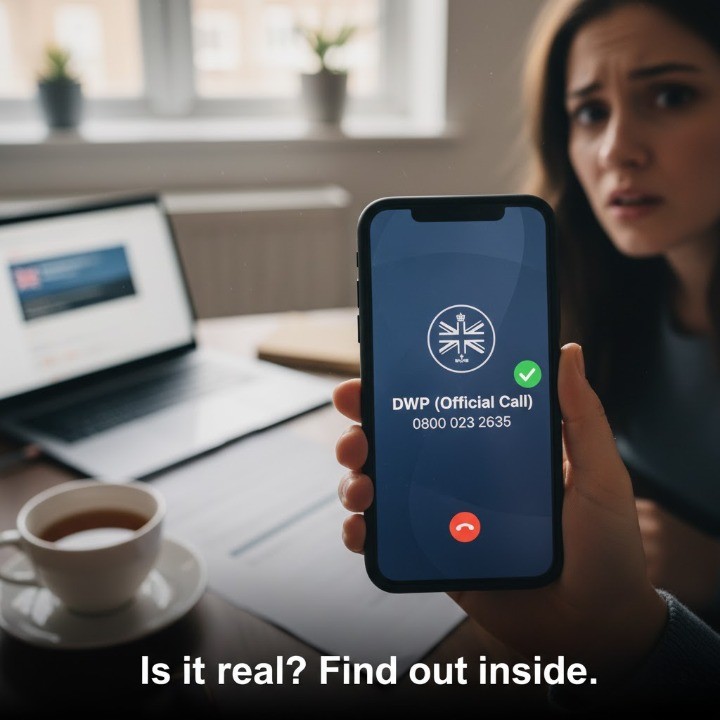
How to Use ChatGPT for Your Bookkeeping Spreadsheet: A Step-by-Step UK Guide (2025)
It’s 10 PM on the 30th, and your VAT return is due. You have a 300-line bank statement CSV file, zero motivation, and a growing sense of dread. We’ve all been there. You’ve seen the hype online, so you wonder: “Can I really use ChatGPT for my bookkeeping spreadsheet, or is it just a toy?”
Most guides show simple, ideal examples. They don’t tackle a real, messy UK bank statement. They don’t mention HMRC, data privacy, or the “human-in-the-loop” workflow you actually need to stay compliant.
This is a practical, step-by-step guide for UK small business owners and sole traders. You will learn (1) how to safely anonymize your financial data, (2) the exact workflow for uploading a spreadsheet, and (3) a library of copy-paste prompts to categorize expenses for a UK VAT return.
Why Use ChatGPT for Bookkeeping? (A Reality Check for 2025)
ChatGPT, especially with the advanced models available in 2025, can be a powerful assistant. It’s not a replacement for an accountant, but it’s a revolutionary tool for automating the most tedious parts of DIY bookkeeping.
The Good: A 24/7 Automated Bookkeeping Assistant
When applied correctly, ChatGPT is brilliant at:
- Automating Data Entry: Instantly categorizing hundreds of bank transactions.
- Cleaning Messy Data: Standardizing vendor names (e.g., turning “TFL Travel” and “TFL” into “Transport for London”).
- Generating Summaries: Creating a quick Profit & Loss summary from your raw data.
- Reducing Human Error: Catching oddities in text descriptions that you might miss late at night.
The Bad: The “HMRC Warning” You Must Read First
Let’s be crystal clear. This is the most important section of this article.
You, the business owner, are 100% legally liable for your tax submissions, not the AI.
ChatGPT is a tool. It is not a registered agent, a bookkeeper, or a chartered accountant. If it makes a mistake (called a “hallucination”) and miscategorizes an expense, HMRC will not accept “my AI told me to” as an excuse.
Think of it as the world’s most advanced intern. You must review its work. As the Institute of Chartered Accountants in England and Wales (ICAEW) consistently advises, professional oversight is critical when deploying new technology in finance.
The Ugly: Data Privacy & “AI Hallucinations”
You should be worried about pasting your financial data into a chat window. By default, OpenAI can use your conversations to train its models. Never paste sensitive, non-anonymized financial data into a public chat.
The solution is not to avoid the tool; it’s to use it safely. The workflow below starts with a critical anonymization step to protect your data.
You also must be aware of “AI hallucinations.” This is when the AI provides an answer that is confidently and completely wrong. It can make up facts, misinterpret a description, or make simple math errors. Our “human-in-the-loop” workflow is designed to catch these.
The 3-Step Workflow: Using ChatGPT for Your UK VAT Return
This is the practical, step-by-step case study. I’ll walk you through taking a messy CSV file and turning it into a clean, VAT-categorized list.
Step 1: Prep Your Spreadsheet (The “Anonymization” Step)
First, export your bank transactions as a .csv file. You can get this from your UK bank (like Starling, Monzo, or Lloyds) or your accounting software like Xero or FreeAgent.
Your CSV will have sensitive, personally identifiable information (PII). We must remove this before we upload anything. You can copy-paste the data into ChatGPT (if it’s a small amount) or a text editor and use this prompt.
The Anonymization Prompt:
Act as a data privacy specialist. I will paste CSV data. Your *only* task is to anonymize it. Remove all personal names, account numbers, and sort codes from the 'Description' column and replace them with '[REDACTED]'. Return *only* the cleaned CSV data.
This strips out the sensitive details while keeping the transaction descriptions (like “Amazon,” “Tesco,” or “Adobe”) that the AI needs for categorization.
Step 2: Choose Your ChatGPT Method (The Workflow)
You have two main options.
- The “Copy-Paste” Method: Good for under 50 rows. Just copy your anonymized data and paste it directly into the chat, followed by your prompt. It’s simple, but clumsy for large files.
- The “Advanced Data Analysis” Method (Recommended): This is the game-changer and requires a ChatGPT Plus (paid) subscription. It lets you upload your file directly.
Here is the “Advanced Data Analysis” workflow:
- Log in to ChatGPT.
- Click the ‘paperclip’ icon in the message bar.
- Upload your anonymized
.csvfile (e.g.,vat-data-anon.csv). - Wait for ChatGPT to confirm it has read and understood the file. It will often show you the column headers.
Now you are ready for the magic prompt.
Step 3: The “Magic Prompt” for UK Expense & VAT Categorization
This is where we get specific. Don’t just say “categorize this.” You need to give the AI a clear role and, crucially, the exact UK-specific categories you need.
The UK VAT Categorization Prompt:
Act as an expert UK bookkeeper familiar with HMRC rules. I have uploaded a CSV file of my bank transactions.
Your task is to analyze the 'Description' column and create two new columns: 'Category' and 'VAT_Category'.
For 'Category', use standard business categories (e.g., "Office Supplies", "Travel", "Software", "Utilities", "Staff Welfare", "Marketing").
For 'VAT_Category', use *only* these 4 HMRC classifications: 'Standard-Rated (20%)', 'Zero-Rated (0%)', 'Exempt', or 'Outside Scope'.
Return the full table in a clean, -separated format I can paste back into Excel.
ChatGPT will process the file and provide a complete, categorized table. You can now copy this and paste it directly back into your Excel or Google Sheets file. The tedious 80% of the work is done.
4 More Practical Prompts to Manage Your Small Business
Once your data is uploaded and categorized, you can ask for more insights. This is how you use ChatGPT for bookkeeping spreadsheet analysis beyond just categorization.
1. Generate a “Profit & Loss” Summary
Using the categorized data, create a simple profit and loss summary for this period. Show total income, a list of total expenses by 'Category', and the net profit.
2. Create Simple Financial Forecasts
Analyze the 'Software' and 'Utilities' categories. Based on this 3-month data, project the total costs for these two categories for the next 6 months.
3. Clean and Standardize Vendor Names
Analyze the 'Description' column. Create a new 'Vendor' column. Standardize the vendor names (e.g., 'TFL Travel' and 'TFL' should both be 'Transport for London', and 'AMZN Mktp' should be 'Amazon').
4. Explain Complex Financial Jargon (Fast)
Explain 'Accrual vs. Cash Basis Accounting' as if I am a UK sole trader preparing for Making Tax Digital (MTD).
The “Human-in-the-Loop” Model: Your Most Important Job
You’ve automated the data entry, but the job isn’t finished. Your new role is “AI Reviewer,” and it’s the most important part of this process.
Pro-Tip: Let ChatGPT Categorize, Let Excel Calculate
This is the best piece of advice I can give you.
Pro-Tip: ChatGPT is a language model, not a calculator. It’s brilliant at text categorization but can make basic math errors. Never ask it to sum your totals. Get ChatGPT to format the data, paste it back into your spreadsheet, and use Excel’s
=SUM()or Google Sheets’=SUM()for your final numbers.
Your New Role: The “AI Reviewer”
A 2025 report from Wolters Kluwer on the “Future Ready Accountant noted that AI adoption in accounting surged from just 9% in 2024 to 41% in 2025. The trend is clear: AI is an enhancement tool, not a replacement.
The trustworthy workflow for a sole trader is the 80/20 rule.
- AI does 80%: The tedious work of categorizing 300 lines.
- You do 20%: The high-value review.
Scan the output. Does anything look odd? Did it put your Tesco lunch under “Office Supplies” instead of “Subsistence”? You are the human check. This “human-in-the-loop” model gives you the speed of AI and the safety of your own expertise.
The 60-Second Summary & Your Next Step
Here’s the entire process, summarized.
- ChatGPT is a powerful assistant for spreadsheet bookkeeping, if used correctly.
- NEVER upload sensitive, identifiable data. Use our anonymization prompt first.
- Use the “Advanced Data Analysis” feature (paid plan) to upload your CSV file.
- Use specific, UK-focused prompts to categorize for VAT (use our template).
- ALWAYS act as the “Human-in-the-Loop” to review the AI’s work. You are responsible for your HMRC submission.
Using AI for bookkeeping isn’t about replacing you or your accountant; it’s about upgrading your workflow. It turns three hours of manual, mind-numbing data entry into 30 minutes of high-value, human review.
What bookkeeping task will you automate first? Share your best prompt or question in the comments below.
FAQs
Q1: Is it safe to put my financial data into ChatGPT?
A: Not directly. You must never upload personally identifiable financial data (names, account numbers). As this guide shows, you must anonymize your data before uploading it. For added privacy, you can also disable chat history in your ChatGPT settings, which prevents your conversations from being used for training.
Q2: Can ChatGPT categorize my expenses?
A: Yes. This is one of its strongest skills. It can analyze text descriptions (e.g., “Tesco”) and assign a category (e.g., “Groceries” or “Staff Welfare”). The key is providing a specific, detailed prompt, like the UK VAT template in this article.
Q3: How do I use ChatGPT for data analysis in Excel?
A: You have two main options. First, you can use the “Advanced Data Analysis” feature in ChatGPT Plus to upload your Excel or CSV file directly. Second, you can install third-party Excel add-ins that integrate the AI into your spreadsheet, though these often have their own costs and data security policies.
Q4: Will AI replace bookkeepers in the UK?
A: AI is unlikely to replace bookkeepers. Instead, it is changing the role. It automates repetitive tasks like data entry, allowing bookkeepers and accountants to focus on higher-value work like strategic advice, cash flow analysis, and complex compliance, which AI cannot do.
Q5: What are the limitations of using ChatGPT for accounting?
A: The main limitations are: (1) Data Privacy (you must anonymize data), (2) “Hallucinations” (it can be confidently wrong), (3) Math Errors (it’s a language, not a math tool), and (4) Lack of Real-Time, Specific Knowledge (it doesn’t know your specific business or new, niche HMRC rules unless you tell it).
Q6: Can ChatGPT connect to my accounting software like Xero or QuickBooks?
A: No, not directly. ChatGPT cannot log in to your Xero or QuickBooks account. The correct workflow is to first export your data from that software as a CSV or Excel file and then upload that file to ChatGPT for analysis.





